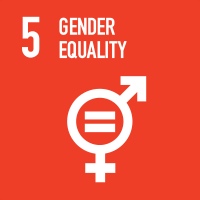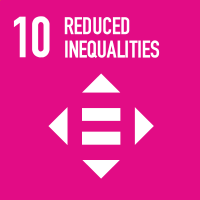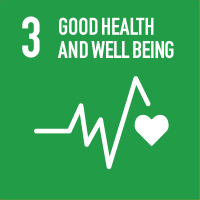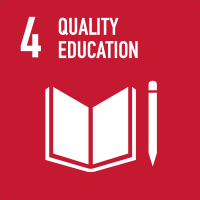Studying at the University of Verona
Here you can find information on the organisational aspects of the Programme, lecture timetables, learning activities and useful contact details for your time at the University, from enrolment to graduation.
Study Plan
This information is intended exclusively for students already enrolled in this course.If you are a new student interested in enrolling, you can find information about the course of study on the course page:
Laurea in Lettere - Enrollment from 2025/2026The Study Plan includes all modules, teaching and learning activities that each student will need to undertake during their time at the University.
Please select your Study Plan based on your enrollment year.
1° Year
| Modules | Credits | TAF | SSD |
|---|
1 module to be chosen amont the following2° Year activated in the A.Y. 2023/2024
| Modules | Credits | TAF | SSD |
|---|
Latin literature (i)
2 modules to be chosen among the following1 module to be chosen among the following2 modules to be chosen among the following3° Year activated in the A.Y. 2024/2025
| Modules | Credits | TAF | SSD |
|---|
2 modules to be chosen among the following1 module to be chosen among the following1 module to be chosen among the following| Modules | Credits | TAF | SSD |
|---|
1 module to be chosen amont the following| Modules | Credits | TAF | SSD |
|---|
Latin literature (i)
2 modules to be chosen among the following1 module to be chosen among the following2 modules to be chosen among the following| Modules | Credits | TAF | SSD |
|---|
2 modules to be chosen among the following1 module to be chosen among the following1 module to be chosen among the following| Modules | Credits | TAF | SSD |
|---|
Legend | Type of training activity (TTA)
TAF (Type of Educational Activity) All courses and activities are classified into different types of educational activities, indicated by a letter.
History of science (i) (2023/2024)
Teaching code
4S01266
Teacher
Coordinator
Credits
6
Also offered in courses:
- History of science (i) of the course Bachelor’s degree in Cultural Heritage
- History of science of the course Bachelor's degree in Philosophy
Language
Italian
Scientific Disciplinary Sector (SSD)
M-STO/05 - HISTORY OF SCIENCE AND TECHNOLOGY
Period
CuCi 1 A, CuCi 1 B
Courses Single
Authorized
Learning objectives
This course intends to explore the impact of early modern science on traditional views of the cosmos and of man's place in nature. It also aims at showing to what extent scientific culture depends both on social and material settings in which scientists work.
Prerequisites and basic notions
The course does not require particular prerequisites.
Program
This course is divided into two parts: 36 hours traditional + 6 hours laboratorial.
The first part will focus on the so-called 'Scientific revolution' in Europe from the Renaissance to the early Eighteenth century. Particular attention will be devoted to revolutionary ideas in astronomy, physics, natural history and medicine.
1. Contents, aims and methodology
2. Historiography of science today
3. Scientific change: Kuhn and the post-positivistic epistemology
4. The Quattrocento: the rise of natural knowledge
5-6. Leonardo: the method, the body, the Earth
7-8. The cosmos of the ancients
9-10. The revolution of Copernicus
11. Reactions to Copernicus
12. Tycho Brahe
13. Johannes Kepler
14-19. Galileo; nature, science and power
20. Medicine in the Renaissance
21. Early modern anatomy: Andrea Vesalius
22. William Harvey
23. Hermeticism and the sciences
24. Natural history in the Renaissance
25-28. Descartes' mechanical cosmos
29. Scientific academies: Italy, Great Britain, France
30-36. Isaac Newton
In the second part, topics dealing with contemporary science will be discussed in comparison with scientific practice of the past.
Apart form the mandatory textbook (one book only among the three suggested), students not participating in the lectures must follow the suggestions given in “Lessico corso (i)”, and read the 'classic' Thomas Kuhn, The Structure of Scientific Revolutions (The University of Chicago Press, or equivalent editions).
Bibliography
Didactic methods
For the first part, lectures will be devoted to illustrating specific topics of the program using slide to read sources, relevant images and historical documents.
For the second part, information on the logistics will be provided as soon as possible.
Learning assessment procedures
During the traditional oral interview the Professor will ask the student to discuss two or more topics of the programme.
International students are kindly requested to get in contact with the Professor as soon as possible.
Students not partecipating in the lectures have also to prepare T. Kuhn, The Structure of Scientific Revolutions, any edition.
Evaluation criteria
The Professor will assess the quality of the acquired information, the logic of the argumentation, the originality and autonomy of thought reached by the student.
Criteria for the composition of the final grade
The final vote does not consist of distinct parts; it is the result of a unitary evaluation of the work made by the student, but the contribution given to the lessons will be taken into account.
Exam language
italiano




